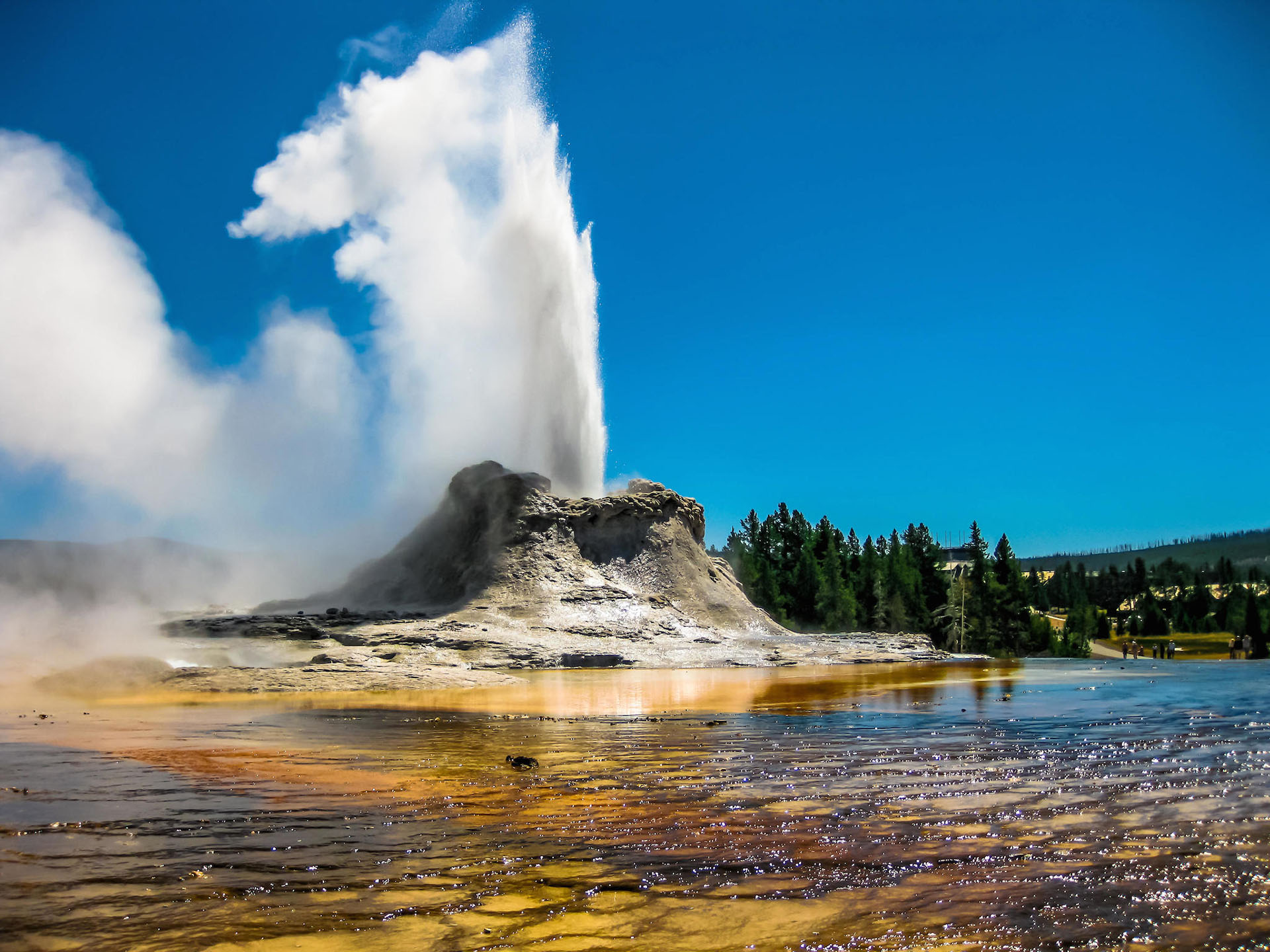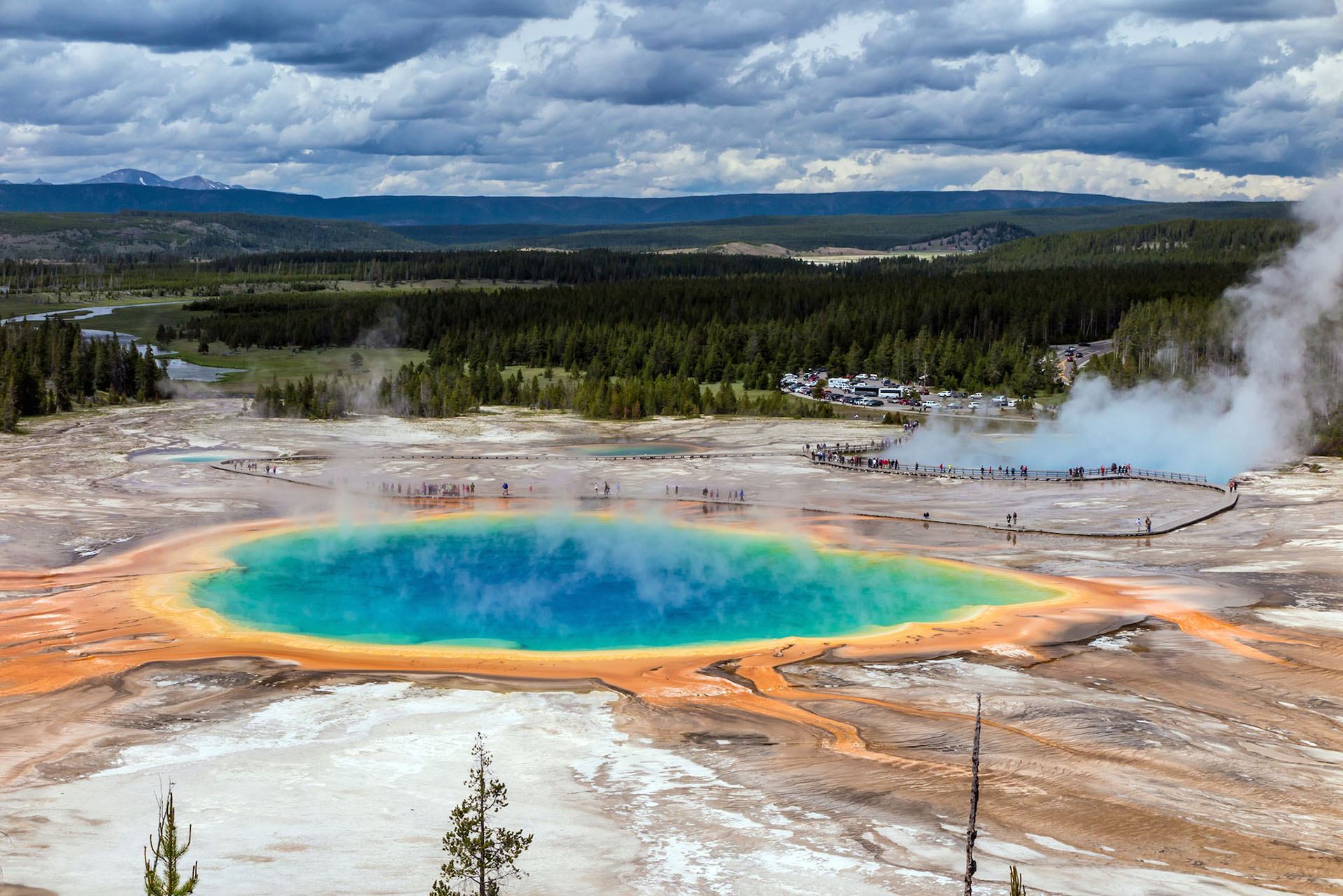Yellowstone National Park attracts over four million visitors each year. Swarms of people flock to the park to see its many natural wonders. Hot springs filled with boiling water host brightly colored bacteria. Geysers shoot heated water hundreds of feet into the air. Mudpots bubble along, giving off a rotten-egg smell. All the while, a giant pool of magma quietly churns just a few kilometers beneath the park, giving off heat that fuels the hot springs, geysers, and mudpots. You may not realize it when you are standing in the park because the crater is at ground level, but Yellowstone is actually an active volcano measuring about 3,960 square kilometers (1,496 square miles).
Does it surprise you that a national park is home to an active volcano so big it almost spans the borders of the park? You’re not the first person to be curious. Scientists have had their eye on Yellowstone’s volcanic activity for a long time.

